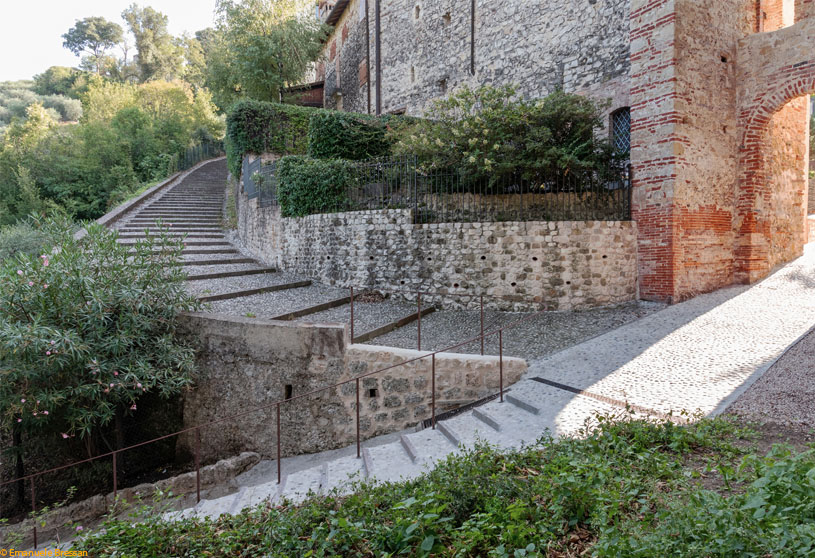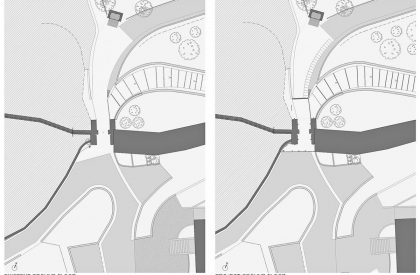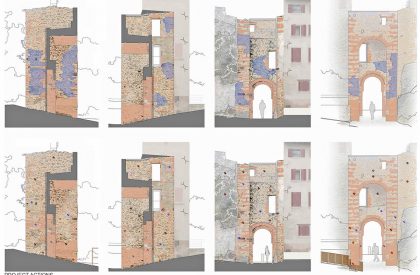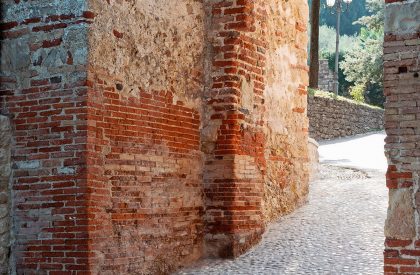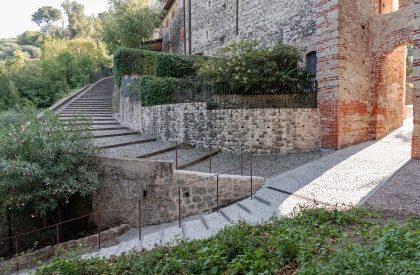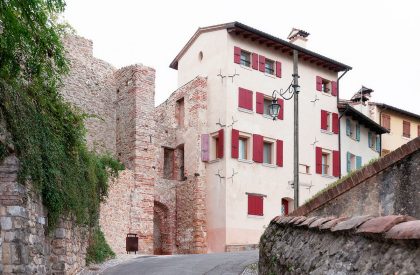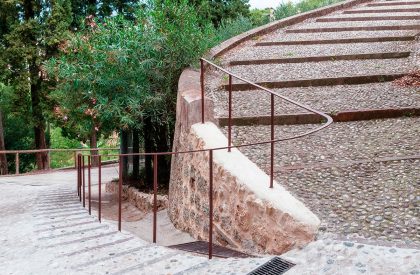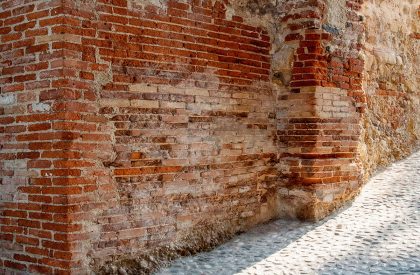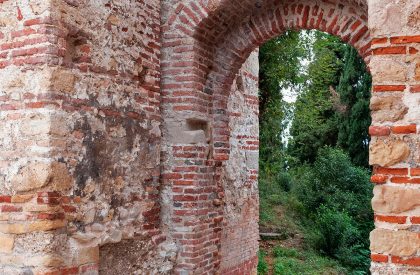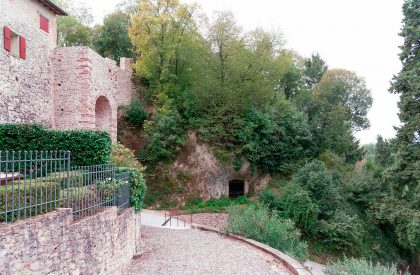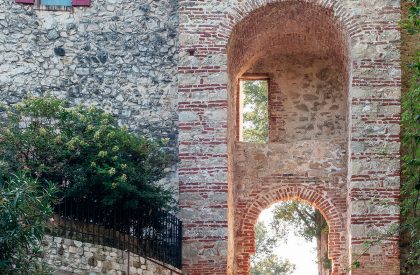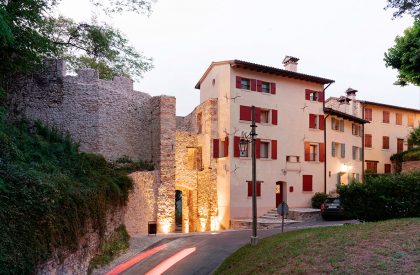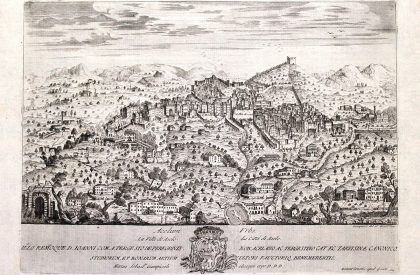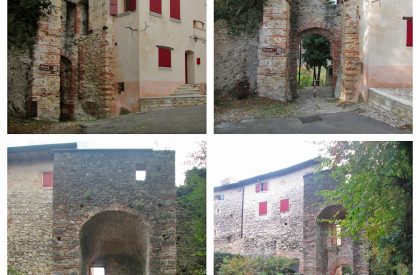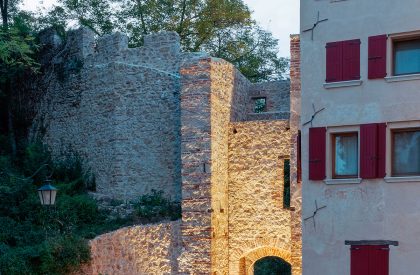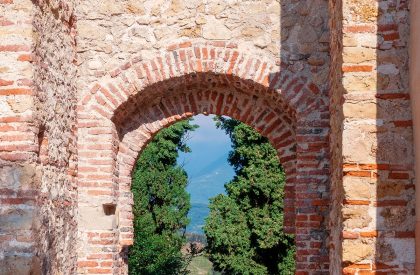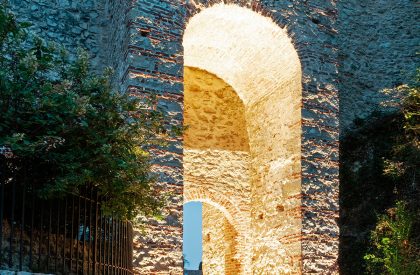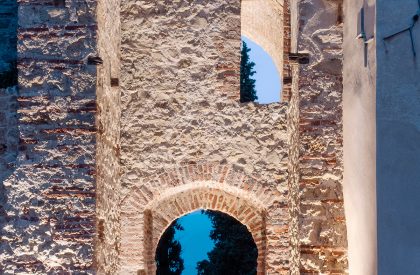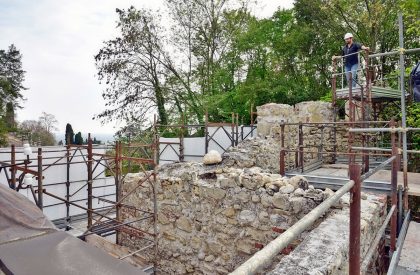Excerpt: Portello Colmarion Restoration, a conservation architecture project by Studio Bressan, seeks to improve general public perception of a historic portal. In keeping with the restoration efforts made to the walls in recent decades, its link with the city was favoured to the romantic notion of the old walls. The restoration also entailed redefining the bicycle and pedestrian paths and resurfacing the river pebble pavement below the gateway.
Project Description
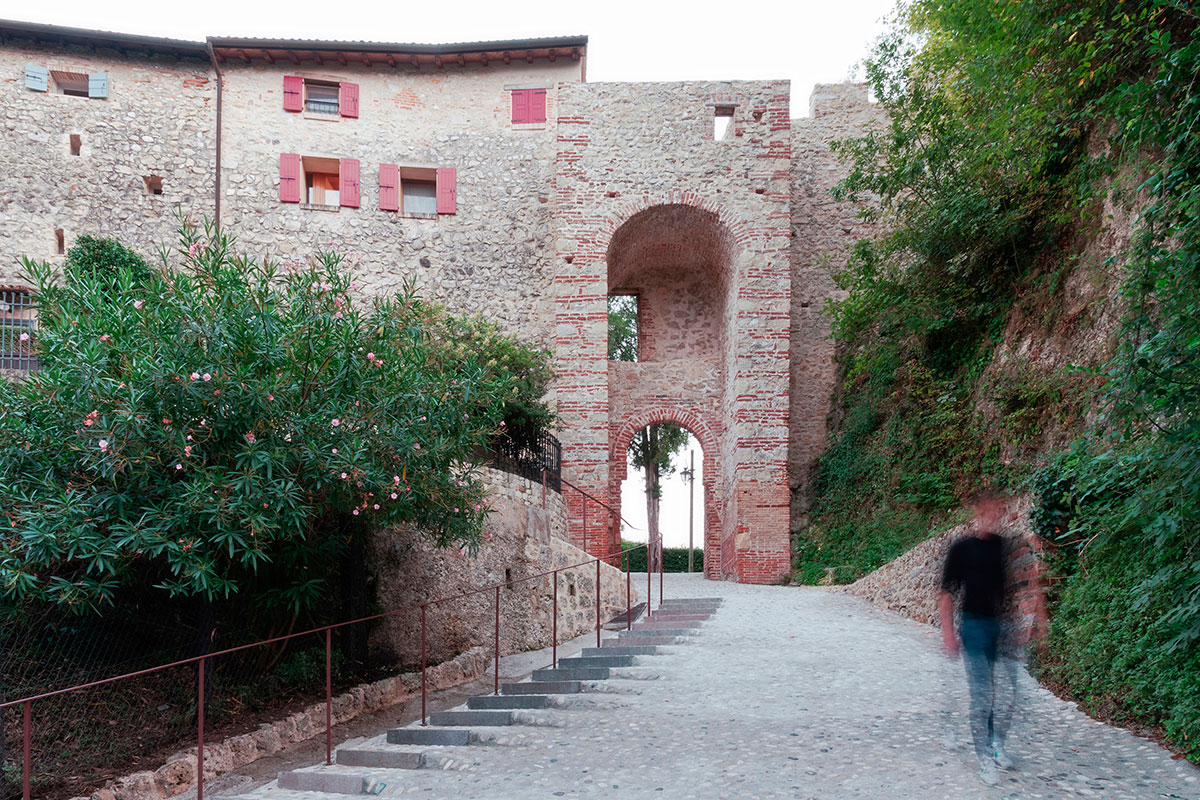
[Text as submitted by architect] The project for the conservative restoration of Portello Colmarion, in the Veneto region’s Asolo, takes place in a landscape context that spans the densely populated area of the city village on one side and the high forest’s heavy vegetation on the other.
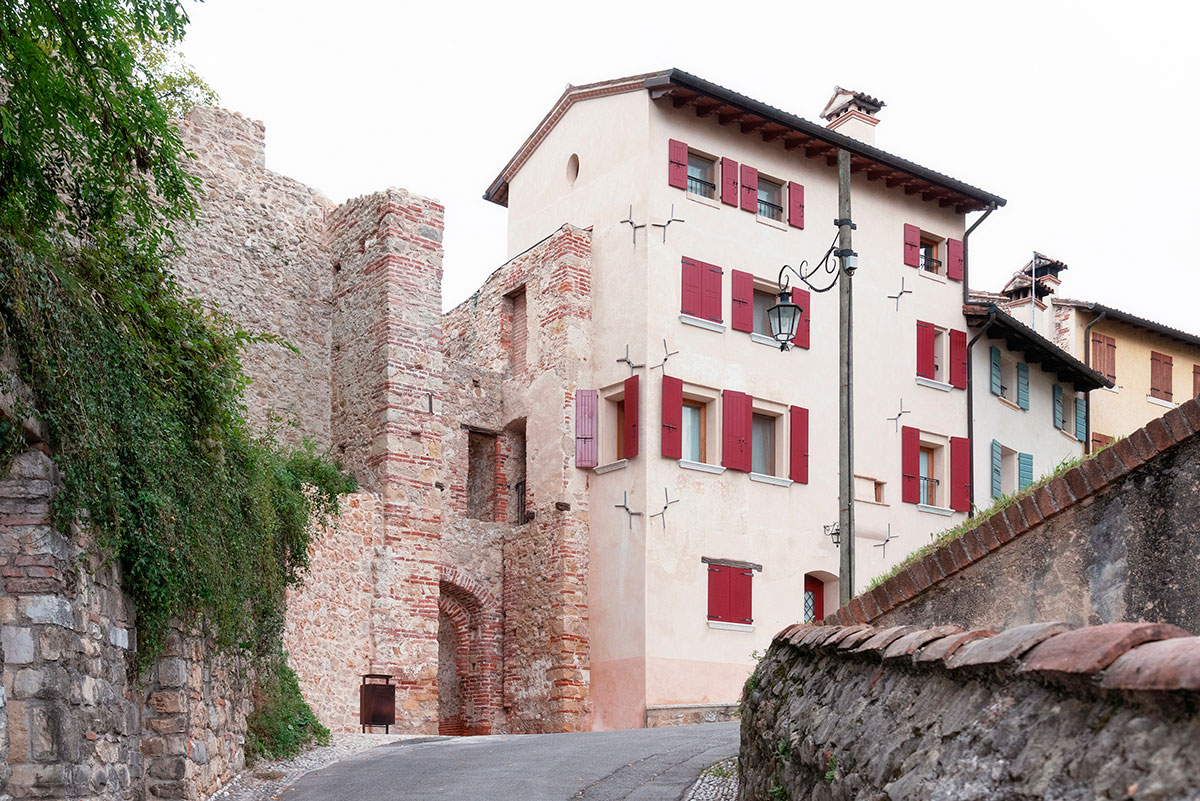
The portal, which is a part of the city’s mediaeval walls that date to the fourteenth century, is situated in a panoramic hilly area at 379 metres above sea level, giving a commanding view of the plain below and reinforcing the nickname given to the village by the poet Giosuè Carducci: the city of a hundred horizons. The site provides an outstanding panoramic point of view facing the system of western Asolo hills and the summit because of the gate’s elevated position.


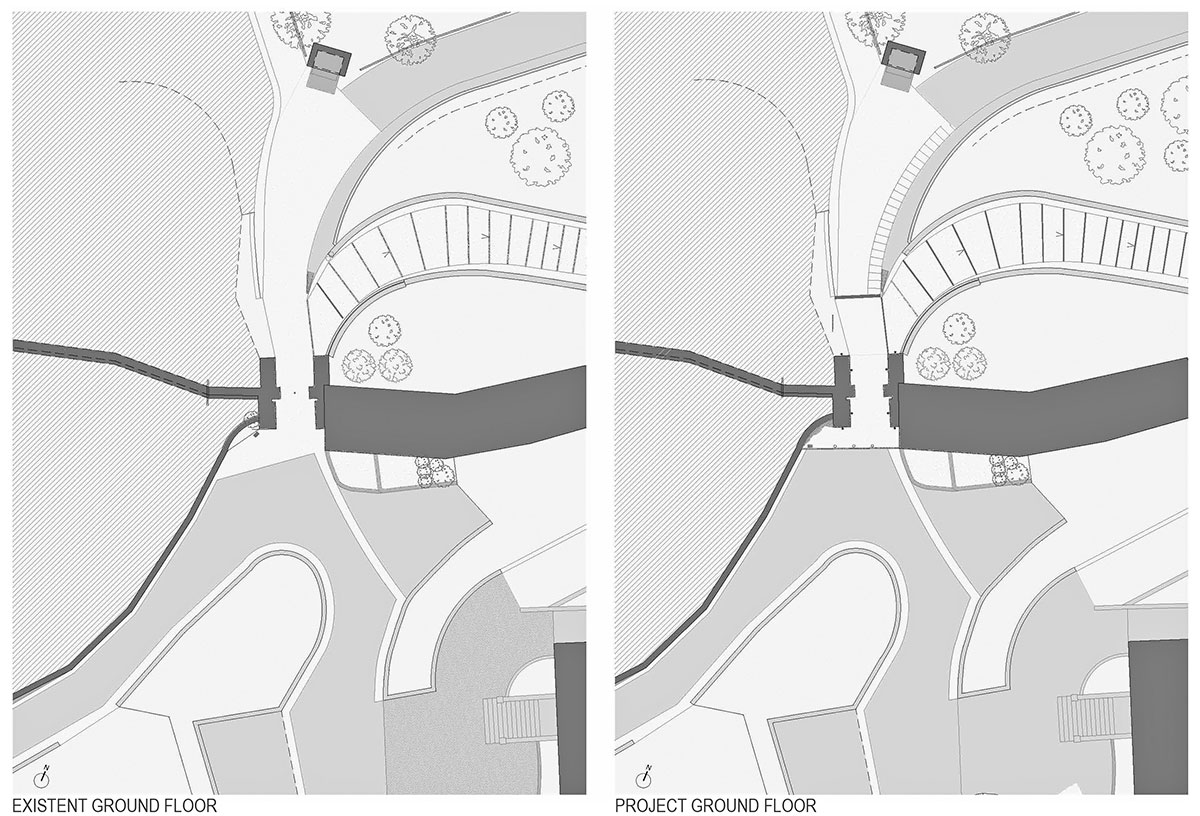
A conservative restoration that would enhance public perception of the historic structure and its relationship with the city was preferred over the romantic image of the historic walls surrounded by vegetation, in keeping with the restoration interventions made to the walls in recent decades.
Brick and roughly squared stone ashlars comprise the majority of the door’s masonry construction. There were no obvious symptoms of the structural breakdown of the walls, except for the deterioration caused on by time and vegetation. A number of investigations were conducted on the stone materials, the original mortars, and the stratigraphy of the plaster traces that were present following the devitalization and subsequent careful removal of the parasitic plants.

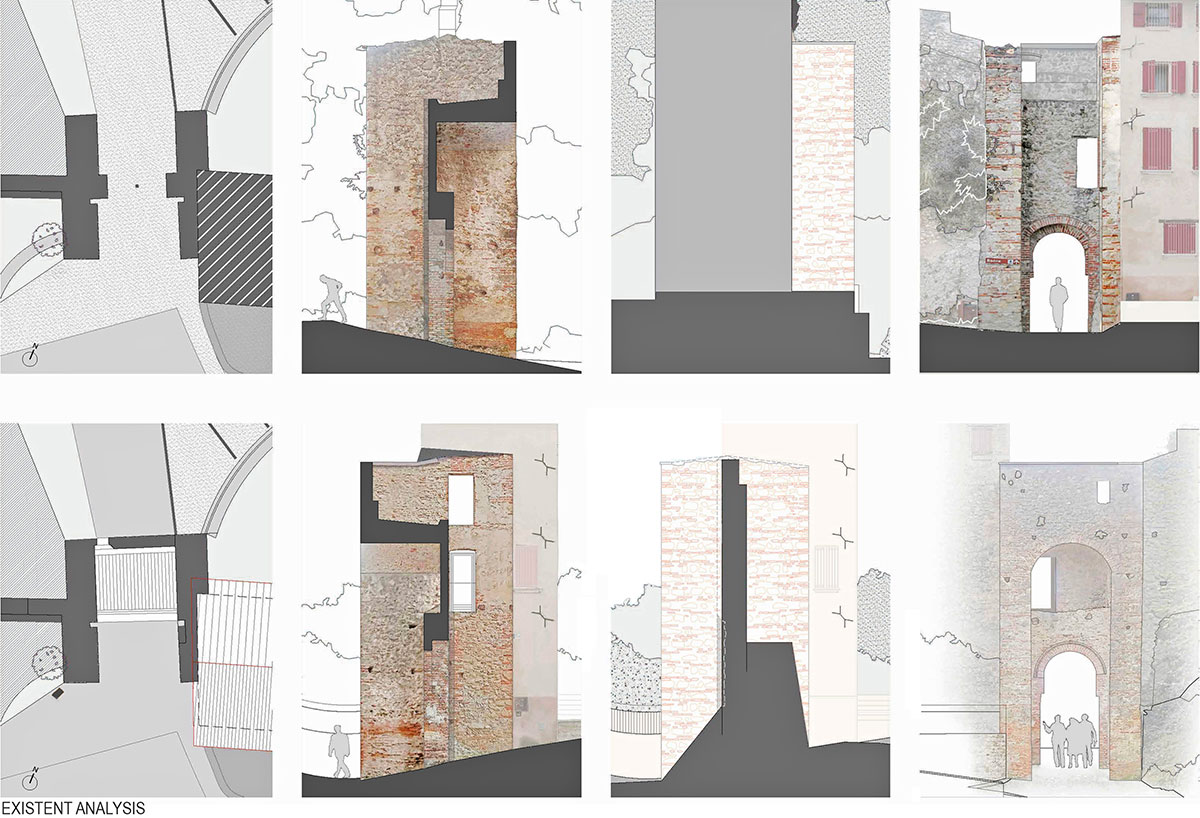

These investigations made it feasible to plan a precise set of procedures for consolidating, restoring, and integrating the building’s masonry’s most obvious gaps. The study of the materials allowed it to be determined that the original mortar aggregates were a combination of lime and puddingstone, a natural sedimentary conglomerate typical of the Asolo hills and made up of rounded fragments cemented with limestone, silica, or clay-based binders. The mediaeval gate, a one-of-a-kind relic and a defining characteristic of the hilly region of Asolo, has been able to recapture its original appearance thanks to the grouting and pointing of the joints using this specific cement.
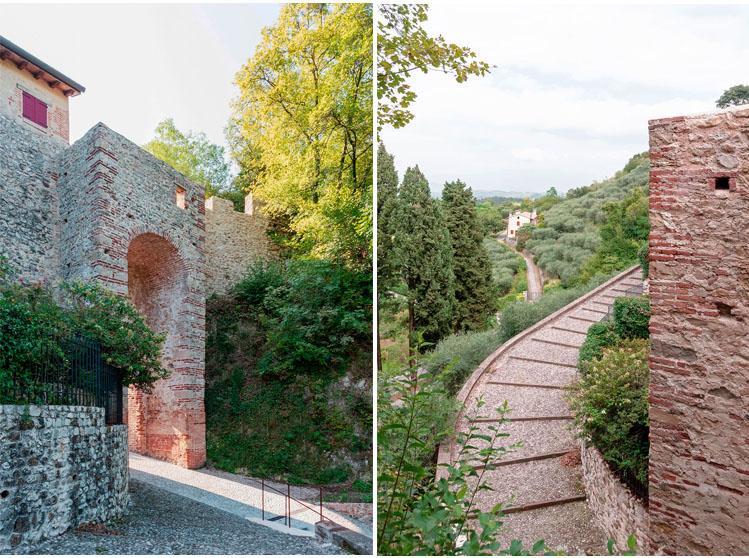
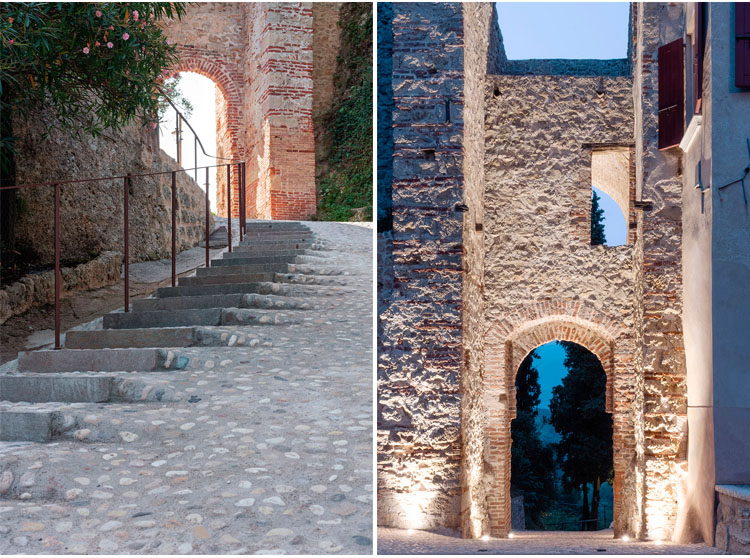
The addition of a synthetic lighting system improved the appearance of the gate considerably. The project also involved the redefinition of the pedestrian and bicycle pathways, the resurfacing of the river pebble pavement below the gateway, the installation of a staircase on the building’s northeast side and a system of parapets to guard the steeply sloping pedestrian paths.
